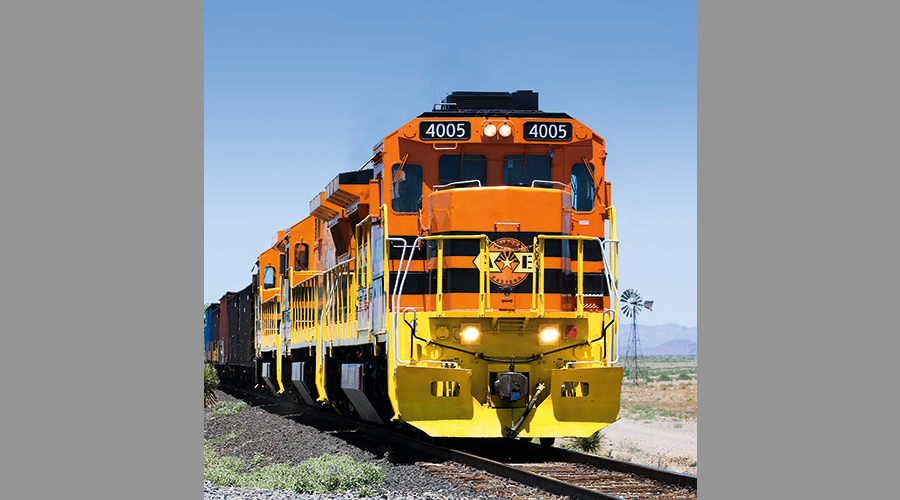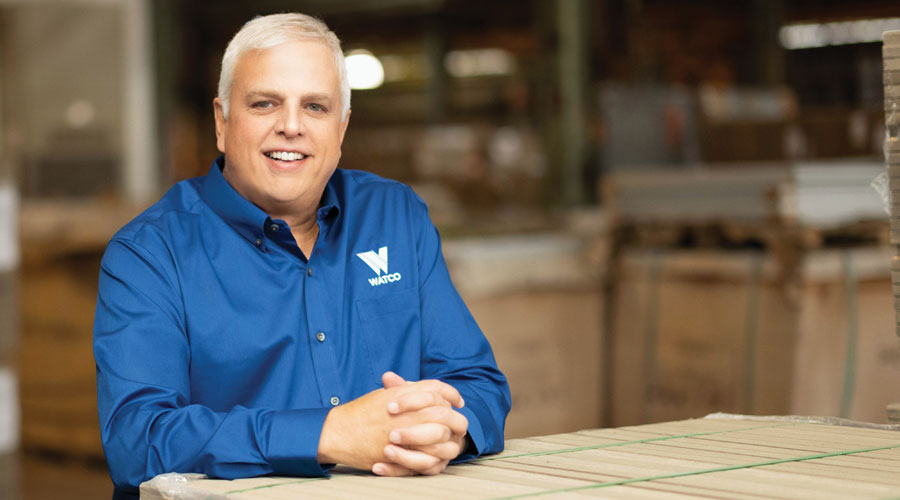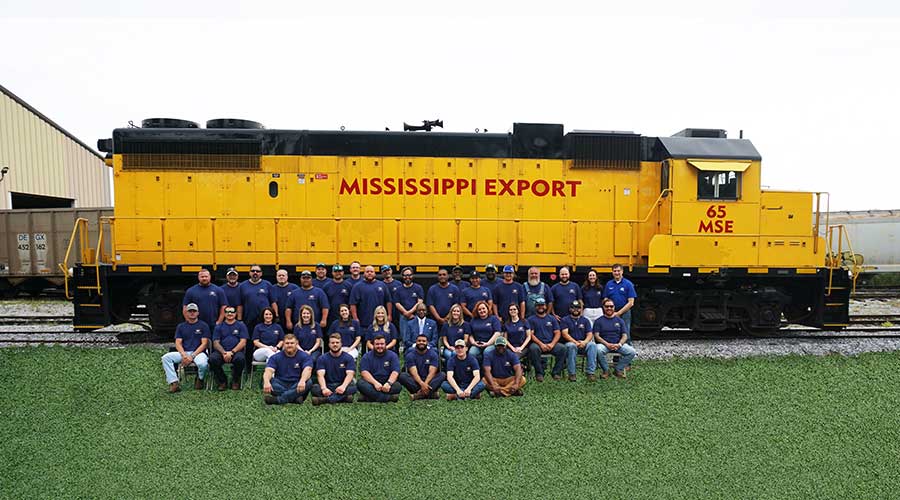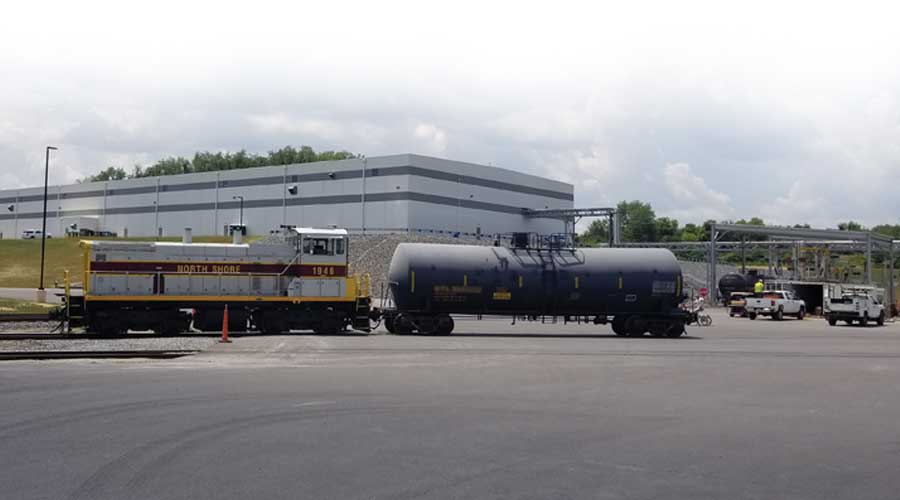Stay updated on news, articles and information for the rail industry
April 2007
Rail News: Short Lines & Regionals
Iowa Interstate: Gaining speed on the Interstate
By Jeff Stagl, Managing Editor
During its brief history, Iowa Interstate Railroad Ltd. (IAIS) has faced periods of hard times. Since 1984, when Heartland Rail Corp. purchased right of way and track from the former Chicago, Rock Island and Pacific Railroad and formed IAIS to operate an Omaha, Neb.-to-Chicago line, the regional occassionally struggled to generate capital, flirted with bankruptcy, confronted floods and poor grain harvests, and turned away business because track couldn’t handle 286,000-pound rail cars.
“There were some bad times in the late 1980s and early 1990s,” says Dennis Miller, who joined IAIS in 1985 as a locomotive engineer, and has served as president and chief executive officer since 2004. “There was competition with the Chicago & North Western and Illinois Central to get business, traffic at the time wasn’t the greatest in the world and infrastructure wasn’t in great shape.”
But since 2002 — after the 552-mile regional diversified its traffic mix, upgraded infrastructure and improved transit-time performance — there’ve been mostly good times at IAIS. Traffic has increased more than 50 percent, train speeds have risen from 25 mph to 40 mph, employment has shot up from 155 to 190 workers and derailments have decreased.
In addition, the railroad obtained federal loans in 2005 and 2006 to upgrade 337 track miles between Atlantic, Iowa, and Bureau, Ill., to 286k standards, and acquire higher-horsepower locomotives. And last year, the regional acquired two railroads and leased track from CSX Transportation that helped boost capacity and expand business opportunities.
IAIS managers expect the good times to keep rolling if the railroad can capitalize on its opportunities.
With four ethanol plants to be built and a few more proposed on the regional’s line, ethanol-related carloads — which currently account for 10 percent of annual traffic — could double or triple by 2009. Managers also anticipate growth in biodiesel, soybean, coal, intermodal and steel traffic. The railroad that moved 74,000 carloads in 2006 could reach the 125,000-carload mark in five years.
“We were very grain dependent — about 50 percent of our traffic was grain. But now that’s down to 17 or 20 percent, and we’re moving a lot more carloads,” says Miller. “We’re moving more steel and scrap metal, lumber and paper, flour, sugar and fertilizers.”
To register more carloads by 2012, IAIS managers will need to continue selling shippers on the regional’s 286k-ready track, value-added services (including transloading and car storage), consistent transit times, and connection to all Class Is, and several other regionals and short lines. They also must convince customers that the railroad — a wholly owned Railroad Development Corp. subsidiary since RDC purchased IAIS from Heartland Rail in 2003 — isn’t the struggling, poor-performing Iowa Interstate of years past, says Miller.
The regional began distancing itself from that reputation in 2001, when IAIS reverted to “Railroading 101” basics to improve operational performance and boost safety, he says. Managers decided to slow train speed from 40 mph to 25 mph to prevent the one or two derailments that had occurred each year because of deferred track maintenance.
“We found trains got there just about as fast at 25 mph, and we have had no major derailments since 2001,” says Miller.
Supervisors also stressed training and proper train-handling procedures, and emphasized job briefings and safety education to “get everyone to understand a rule is a rule and we need to follow it,” he says. The approach helped IAIS win the gold E.H. Harriman Group C Award in 2003 by recording no Federal Railroad Administration (FRA)-reportable injuries.
“We needed to improve safety and become more scheduled, and then go to customers and say, ‘We can get from Point A to Point B on time,’” says Miller.
Relationship building
IAIS also needed to change the Class Is’ “distrusting view” of the regional as a Class II that sometimes took business away and always seemed to be on the verge of bankruptcy, he says.
Although IAIS continues to compete with several Class Is, the regional tries to partner with them to exploit traffic opportunities, says IAIS Senior Vice President of Marketing and Sales Richard Stoeckly. For example, the regional and Class Is could jointly move ethanol from Iowa to southern California, New York or Texas markets.
“To us, it doesn’t matter who handles the long haul,” says Stoeckly.
For the past two-and-a-half years, IAIS also has worked with one Class I to provide the large road a value-added service: collecting corn syrup-carrying rail cars for unit trains serving a corn processing company. The regional collects the cars during a four- to five-day period, then hands off a completed 90-car unit train to the Class I.
“We’re the gatherers,” says Stoeckly. “We have the potential to do this for four more customers because of ethanol plants either under construction or on the drawing board.”
To be built in Atlantic, Council Bluffs and Menlo, Iowa, and Annawan, Ill., the ethanol plants are projected to generate inbound carloads of corn, and outbound carloads of ethanol and distillers dried grains for IAIS. Likewise, a new 30-million-gallon-capacity biodiesel plant Central Iowa Energy opened last month in Newton, Iowa, soon will add inbound vegetable oil and outbound biodiesel carloads to the regional’s traffic coffers.
And Archer Daniels Midland Co.’s biofuel plant in Cedar Rapids, Iowa, will boost traffic after the company doubles the facility’s size later this year.
However, until the ethanol market matures in four to six years, there are a few uncertainties, such as the local truck market, says Stoeckly.
“Will there be enough corn available?” he asks. “If there are many ethanol plants and a bountiful corn harvest, the corn could all be trucked locally.”
Ramping up business
IAIS officials have few concerns about the intermodal market. The regional, which operates ramps in Blue Island, Ill. (outside Chicago), and Council Bluffs, Newton and West Liberty, Iowa, continues to generate intermodal business. For example, IAIS handles eastern traffic blocks for CSXT and Norfork Southern Railway at the Blue Island ramp so the Class Is can bypass Chicago.
“We have an advantage in Blue Island because Chicago is congested and we have good service into and out of the ramp,” says Stoeckly.
IAIS also has gained a coal transportation advantage by becoming 286k-compliant. The regional now can bid on two- or three-year coal contracts the railroad wouldn’t have been able to pursue three or more years ago, says Miller.
“We had opportunities to be involved in coal routes, but we couldn’t because we weren’t at 286,” he says. “We move about 400,000 tons of coal annually, but now have opportunities to move several million tons a year.”
IAIS couldn’t have afforded the 286k upgrades or completed the work in two years without federal funds. In early 2005, the regional obtained a $32.7 million Railroad Rehabilitation and Improvement Financing (RRIF) program loan from the FRA. IAIS used the proceeds to help fund the installation of more than five miles of continuous-welded rail (CWR) and 180,000 wood ties. IAIS also welded 2,700 joints, upgraded 44 bridges and repaired several grade crossings.
“Now, 70 percent of our mainline is welded rail,” says VP of Engineering Pat Sheldon.
Getting up to speed
After upgrading track and eliminating joints, IAIS increased train speed from 25 mph to 40 mph on the welded lines.
“Prior to 2005, we didn’t have any 40 mph track, and now we have 200 miles,” says Sheldon.
IAIS plans to continue upgrading track this year. The regional will spend $7.1 million to install 6.2 miles of CWR and 50,000 wood ties (see 2007 MOW Plans).
Later this year, IAIS also will begin a multi-year project aimed at incorporating its yard with a former Great Western Railway of Iowa L.L.C. (CBGR) yard in Council Bluffs. Last year, IAIS acquired CBGR from OmniTRAX Inc. primarily to expand the regional’s intermodal operation in the city. The project includes removing and slightly redesigning track.
“The CBGR yard is across from our yard, but it’s not easy to access,” says Sheldon. “Our goal is to link the two
together.”
In addition to the CBGR deal, IAIS last year completed two other transactions that will expand capacity and provide access to more markets. The railroad leased 32 track miles between Utica and Henry, Ill., (which IAIS plans to upgrade to 286k standards) from CSXT to directly serve several shippers, including PolyOne Corp., United Suppliers and Lone Star Cement; and acquired the Lincoln & Southern Railroad (L&S) from PolyOne to obtain a barge connection for grain and other commodities.
“The transactions didn’t necessarily make us bigger, [but] they were to our benefit,” says Miller. “We had leased the L&S line for 20 years, and business at IAIS was ballooning at Council Bluffs, so we bought the CBGR property to increase our capacity.”
The power to effect change
Also to IAIS’ benefit: The regional last year landed its second RRIF loan, at $9.35 million, to help fund the purchase of 22 GP38-2 locomotives from GATX Rail. The road previously leased the power. Along with six acquired SD38-2 locomotives, the newer GP38-2s have helped IAIS modernize its fleet and get rid of what became too wide a variety of locomotive models.
“Now, our power is all the same and mechanics know how to fix them,” says Miller. “Before, we had hodgepodge power.”
To ensure IAIS doesn’t revert back to the hodgepodge traffic days of the 1980s and 1990s, Miller & Co. are developing a five-year plan that includes operational and infrastructure goals.
“We want to find ways to improve yards and interchanges to be more efficient,” says Miller.
By 2012, IAIS also might build new yards in the Quad Cities area and Iowa City, and construct a diesel repair facility.
Miller and his team will consider just about any operational change that brings more freight to IAIS. It wasn’t long ago when the prospect of pursuing all types of traffic wasn’t on former managers’ radar screens at the grain-moving railroad.
“We’ll benefit from going after other commodities,” says Miller. “We’re open for business and open for anything.” 
Keywords
Browse articles on Iowa Interstate Iowa Interstate Railroad ethanol 286k car regional railroadContact Progressive Railroading editorial staff.


 2025 MOW Spending Report: Passenger-rail programs
2025 MOW Spending Report: Passenger-rail programs
 Gardner steps down as Amtrak CEO
Gardner steps down as Amtrak CEO
 Guest comment: Oliver Wyman’s David Hunt
Guest comment: Oliver Wyman’s David Hunt
 Women of Influence in Rail eBook
Women of Influence in Rail eBook
 railPrime
railPrime







